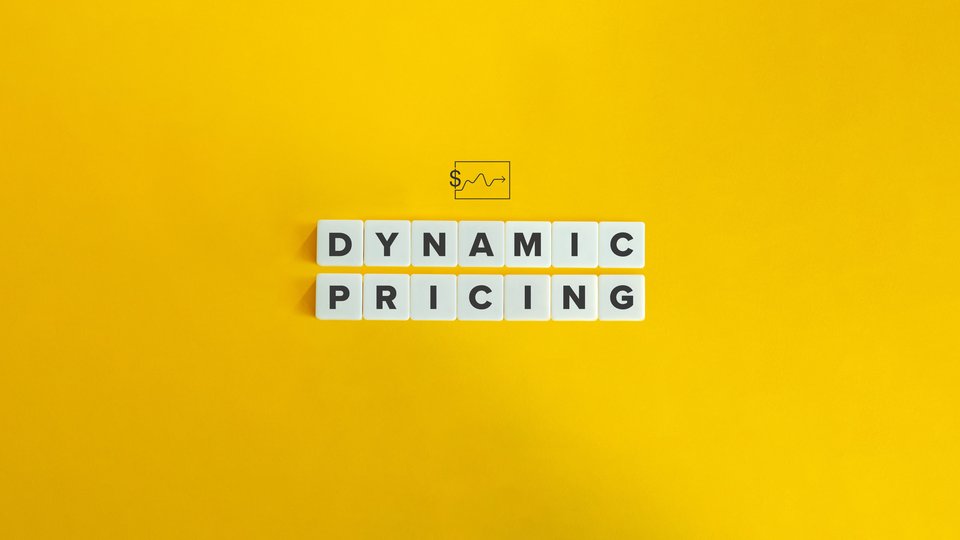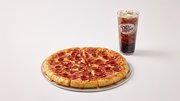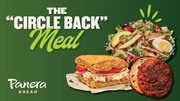Operations
Dynamic pricing: Teaching restaurant customers to embrace it
Fast casual executives discuss the future of dynamic pricing and how to gain customer buy-in.

March 18, 2024 by Cherryh Cansler — Editor, FastCasual.com
Although "dynamic pricing" isn't a new concept, most U.S. restaurant consumers didn't notice it until Wendy's announced two weeks ago that it wasusing digital menu boards to change featured menu items and pricing.
The problem, however, was that few people read past the irresponsible headlines (a topic for another day) and began throwing around the phrase "surge pricing," comparing it to how Uber raises prices after popular sporting events or concerts. Customers ran with it, thinking they'd be paying $20 for a burger at dinnertime and fled to social media to complain and propose Wendy's bans.
Wendy's Surge Pricing https://t.co/cbYBttUUmE
— Suppression City (@Jennifer375290) March 10, 2024
The chain quickly released a statement explaining the digital menu boards would allow it to feature discounts at non peak hours, not price gouge.
"This was misconstrued in some media reports as an intent to raise prices when demand is highest at our restaurants," Wendy's said in a press statement. "We have no plans to do that and would not raise prices when our customers are visiting us most. Any features we may test in the future would be designed to benefit our customers and restaurant crew members."
Let's face it; Americans do not read (a second topic for another day) and the damage was done.
The fiasco was a good reminder of the importance of careful marketing, according to Ryan Goff, CMO of marketing agency MGH, which has worked with a variety of fast casual brands, including Which Wich, bb.q Chicken, Mason's Famous Lobster Rolls and 16 Handles.
"The fast food chain has failed in illustrating how such a strategy could actually benefit customers through specific examples," he said in an email interview. "If Wendy's had come out and said, 'Imagine getting 50% off Frosty's between 2 to 4 p.m.' or 'Buy 1, Get 1 Baconator whenever it rains,' it would have provided clear, tangible cases of how dynamic pricing could benefit its customers."
Wendy's got caught in an unfair PR cycle honestly — they never called it surge pricing — the media did, said Thanx CEO Zach Goldstein.
"Surge has a negative connotation and is used to drive increases in supply which aren't true for a restaurant," he told FastCasual. "Dynamic pricing (especially when offering BETTER value to a guest) is a strategy that every restaurant already uses today — especially if they have a loyalty program. This is not new — Wendy's was just planning to do it better and more dynamically."
Goldstein, like Goff, said it was a reminder to retain customer trust when announcing news and to communicate clearly.
"Price is one of the most important parts of a purchasing decision. Wendy's presented this news at an earnings call," he said. "They could have instilled more trust with their customers by announcing it directly to consumers first, prioritizing customer feedback — not shareholder feedback."
A successful use case of dynamic pricing
Dynamic pricing, defined as a pricing strategy that charges customers different prices for the same goods or services based on fluctuations in market demand, has been a staple since 2019 at Finland-based Kotipizza Group Oyj, the parent company of Kotipizza and Social Burgerjoint, said Chief Business Development Officer Janne Reimari.
"We compete a lot with the platform economy in Finland, and dynamic pricing plays an important role in this competition," Reimari told FastCasual. "The market is quite distorted, especially in deliveries, because the operators of the platform economy (Wolt/Doordash) are not particularly hungry to make a profit with their business and are able to be very strong in the market with cheap or free transport prices."
Unlike the experience at Wendy's, the implementation of dynamic pricing at Kotipizza was drama-free.
"The customers have reacted very positively and we have also seen signs of the market's order times becoming wider, that is, some customers order a little earlier or later than the actual peak hours," Reimari said.
Why dynamic pricing works
Although restaurants would like food demand to stay at the same level throughout all opening hours, it's impossible since people are usually hungry four times a day — morning, mid-day, afternoon and evening.
"This traditional rhythm was learned in the industrial age, where the working day and its breaks are also the timing of meals, but the world is changing and people already now and in the future eat more often and smaller portions throughout the day," Reimari said.
The pattern, however, is shaking things up for restaurants.
"Busy times are reduced, and if you have defined your pricing changes through the clock, it may not meet genuine demand," Reimari said. "For this reason, it is better to use a pricing mechanism based on live demand."
That's because restaurant-specific sales targets guide the price levels.
"Those targets are divided into small enough parts for the day so that the change in demand follows the number of orders in the kitchen as closely as possible," said Reimari, who believes dynamic pricing's goal is to achieve optimal sales within the limits of the capacity in use.
"Especially in labor-critical sectors, such as the restaurant industry, it is impossible to increase capacity quickly, and for this reason, dynamic pricing also acts as a kind of indicator of demand," he said. "If we compare the situation to the time before online shopping, every customer who went to the restaurant to place an order could turn away at the door if the restaurant was already full. Nowadays, with the increase in cloud kitchens and online shopping, the user does not understand when placing an order how many orders there are already in the kitchen."
That often leads to angry and confused customers who are waiting but can't see why.
"With dynamic pricing, the aim is not to not sell — this could be done simply by closing the order channel — but to direct customers to place orders at a different time if it is possible for them," Reimari said.
Penn Station East Coast Subs COO Craig Dunaway, however, doesn't think his customers are ready for dynamic pricing and hasn't implemented it.
"We feel it is currently limited to those industries with a more captive audience and less competition, such as airlines, hotels and Uber," he told FastCasual in an email interview. "Just because you can charge higher prices at certain periods of the day, it doesn't mean it's well perceived or popular to consumers. In other examples, guests have no choice. If you need an Uber at 5 p.m., you can't wait until 8 p.m."
Dunaway agreed, however, that lowering prices during non-peak hours instead of raising them during busier times would be better perceived by customers.
"There is a lot of competition in the restaurant industry, and I think to charge the consumers a premium at a particular time of day can be risky," he said. "I think the reaction from consumers has shown they aren't willing to pay a premium. They will just go somewhere else."
San Diego-based Cali BBQ owner Shawn Walchef, disagrees, stating that dynamic pricing has existed since the first happy hour and early-bird promotions. His team is testing the Chris Ello Pulled Pork Sandwich with a variation price swing of $3 with the lowest price coming in at $12. The normal rate is $15, and the peak cost is $18.
"Dynamic pricing is not surge pricing," he told FastCasual in an email interview. "We are in the hospitality business, and we depend on the lifetime value of building a customer for life. At Cali BBQ, we are looking for the best technology that allows us to build a sustainable business for future generations who enjoy our brand. Dynamic pricing is a way to build in transparent pricing for our guests and deeper loyalty."
Goldstein said restaurants with loyalty programs are already practicing dynamic pricing.
"They're just doing it strategically through rewards that prioritize the individual, making them feel rewarded for choosing the restaurant," said Goldstein, who cited Marugame Udon's recent campaign offering a free Tempura Delight with a purchase of $15 or more between 2 and 5 p.m. to loyalty members. He also said that Utah-based Mo' Bettahs' focus on leveraging its loyalty program database and delivering more personalized, relevant offers and campaigns to its customers was another example of a brand offering what is ultimately a lower price to members who come in more frequently.
"The result — in 2023, when most restaurants were raising prices, Mo' Bettah's defied industry trends with a positive traffic trend, leveraging the loyalty database of members to positively influence growth, despite cannibalization of sales due to rapid expansion," Goldstein said.












